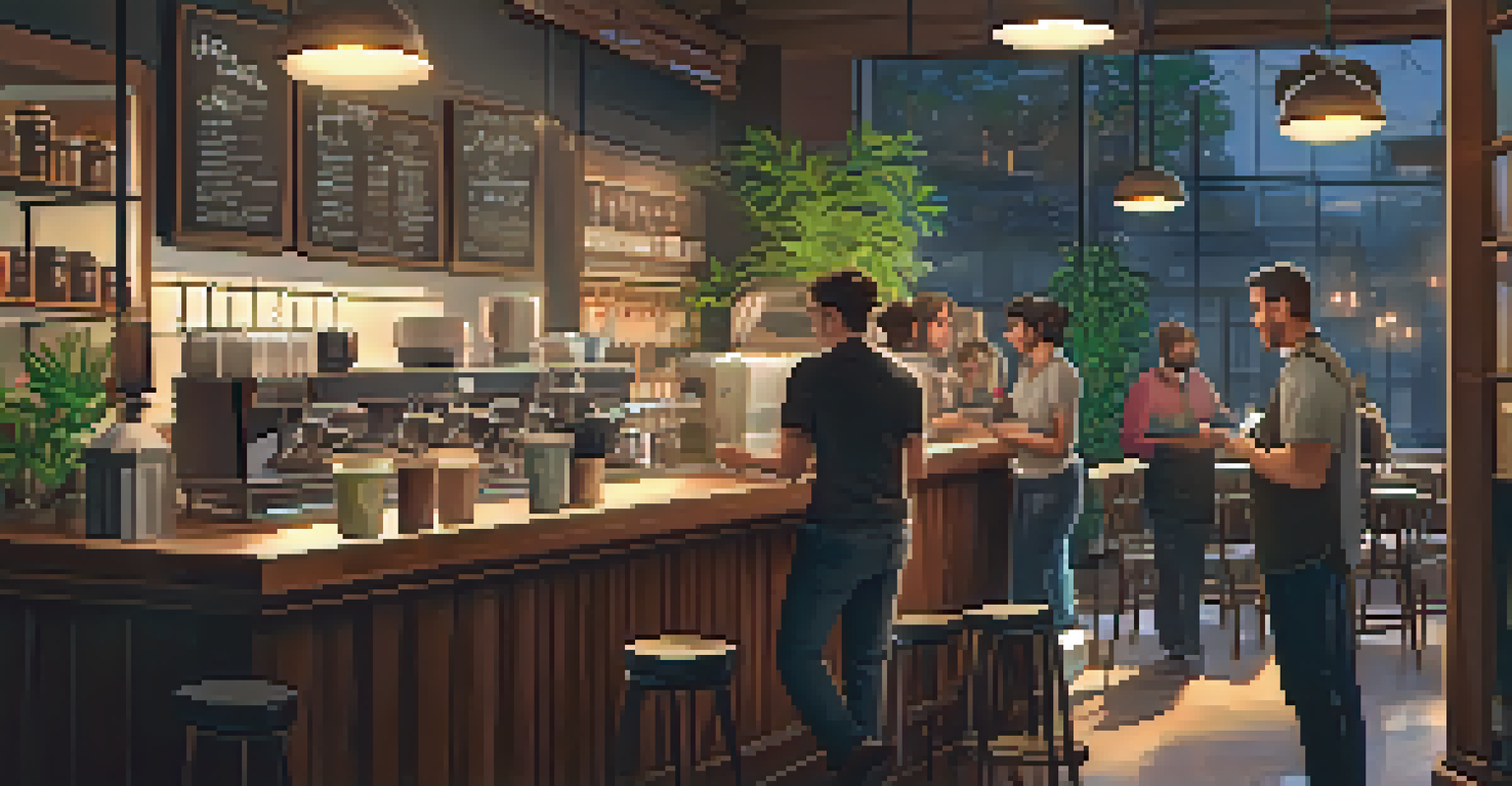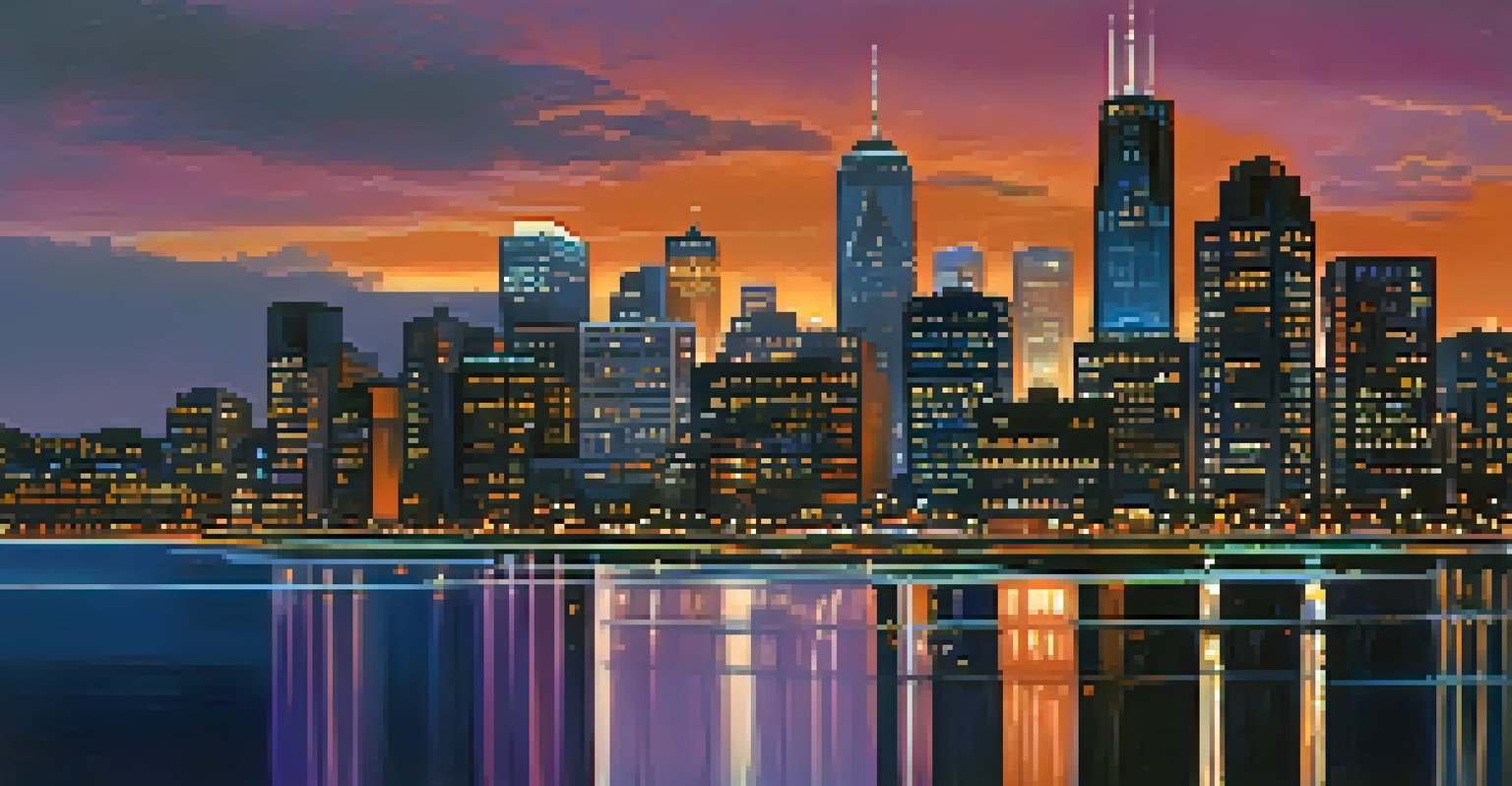Filming Techniques: Capturing the Perfect Scene

Understanding the Basics of Filming Techniques
Filming techniques serve as the backbone of any great movie or video. Whether you're a budding filmmaker or a seasoned pro, grasping the fundamentals is crucial. Techniques like shot composition, camera angles, and movement all play a significant role in storytelling.
The camera is a tool for learning how to see without a camera.
Think of filming techniques as the brushstrokes of a painter; each choice you make enhances the overall picture. For instance, using a low angle can make a character appear dominant or powerful. Similarly, framing your shot thoughtfully can draw viewers' eyes to the most critical elements.
By mastering these basics, you’ll be better equipped to convey emotions and themes effectively. Remember, every scene you capture is an opportunity to tell a story, so understanding these foundational techniques is paramount.
The Art of Shot Composition in Filming
Shot composition is about arranging visual elements within the frame for maximum impact. It's akin to setting a stage where every prop and actor has a purpose. Utilizing techniques like the rule of thirds can dramatically enhance your scene's aesthetics.

For example, imagine dividing your frame into a tic-tac-toe grid; placing important elements along these lines creates balance and visual interest. This approach helps guide the viewer's eye, making your scenes more engaging. Plus, it offers a way to highlight key characters or actions.
Master Shot Composition for Impact
Arranging visual elements thoughtfully enhances storytelling by guiding the viewer's eye and creating balance.
Experimenting with different compositions can yield surprising results. Sometimes, breaking the rules can lead to unique perspectives that resonate with your audience, making your film stand out in a crowded market.
Choosing the Right Camera Angles for Impact
Camera angles influence how viewers perceive a scene and its characters. A high-angle shot can evoke vulnerability, while a low-angle shot often conveys strength or dominance. This subtle manipulation can significantly affect the audience's emotional response.
Sound is the vocabulary of nature; it is a powerful tool that can evoke emotions and create memories.
Consider the perspective you want to create: are you showcasing a character's power or their fragility? For instance, capturing a protagonist from below can make them feel larger than life, enhancing the dramatic stakes of the scene. Conversely, a shot from above may invite empathy for their struggles.
Don't hesitate to mix it up! Varying camera angles throughout your film keeps the visuals dynamic and the audience engaged. A well-placed angle can turn an ordinary moment into something truly memorable.
The Role of Lighting in Scene Creation
Lighting is more than just a practical necessity; it's a vital storytelling tool. The right lighting can set the mood, create depth, and highlight emotions. Consider how natural light changes throughout the day and how it can transform your scenes.
For example, soft, diffused light can evoke feelings of warmth and comfort, while harsh shadows may suggest tension or conflict. Think of a romantic scene bathed in golden hour sunlight versus a thriller set in ominous darkness. Each choice impacts how your audience perceives the story.
Lighting Sets the Mood
Effective lighting transforms scenes by evoking emotions and emphasizing critical elements in your narrative.
Experimenting with different lighting setups can lead to stunning visual narratives. Whether using natural light or elaborate setups, remember that lighting can make or break your scene.
Utilizing Camera Movement to Enhance Storytelling
Camera movement is like the heartbeat of your film—it can quicken or slow down the narrative pace. Techniques such as pans, tilts, and tracking shots can add excitement or tension to your scenes. Each movement should serve a purpose and complement the unfolding story.
For instance, a slow zoom can create intimacy, pulling the audience closer to a character's emotional moment. In contrast, a quick pan can heighten action, making viewers feel like they're part of the chaos. Think about how each movement aligns with your storytelling goals.
Experimentation is key here. Try different movements to see which best conveys the emotions and themes of your narrative. The right camera movement can transform a static scene into a captivating experience.
Sound Design: The Unsung Hero of Filmmaking
While visuals are crucial, sound design is equally important in creating an immersive experience. The right sound effects, background music, and dialogue can elevate a scene from ordinary to extraordinary. It’s the audio that often lingers in the audience’s memory long after the credits roll.
For example, think of a suspenseful moment in a thriller. The subtle creaking of a door or an eerie musical score can heighten tension and keep viewers on the edge of their seats. This is the magic of sound design—it can evoke emotions that visuals alone may not achieve.
Sound Design Elevates Experience
Carefully crafted sound design enhances the emotional depth of a film, making it memorable long after viewing.
Don’t underestimate the power of silence either. A well-timed pause can create anticipation, making the subsequent sound even more impactful. Embrace sound as a tool to enhance your film's emotional depth and storytelling.
Editing Techniques for a Polished Final Product
Editing is where the magic truly happens, turning raw footage into a cohesive story. It’s about selecting the best takes, crafting a rhythm, and ensuring your narrative flows smoothly. A well-edited film can evoke emotions and maintain viewer engagement.
Consider techniques like cutting on action or using match cuts to create seamless transitions between scenes. These methods help maintain the film's pace and keep the audience invested in the unfolding story. Each edit should serve to enhance the overall narrative.

Remember, editing is not just about cutting; it’s about shaping the viewer's experience. Take your time in this stage, as it can significantly impact how your film is perceived and enjoyed.
Final Thoughts on Perfecting Your Filming Techniques
Perfecting your filming techniques is an ongoing journey, not a destination. Each project provides an opportunity to learn and refine your skills. Embrace the creative process and don’t shy away from experimenting with new ideas.
Remember, the best films often come from a blend of technical knowledge and creative intuition. Use the techniques discussed as a foundation, but allow your unique voice to shine through. Authenticity is key in resonating with your audience.
As you continue to capture scenes, keep honing your craft. With dedication and practice, you’ll capture moments that not only look stunning but also resonate deeply with viewers.